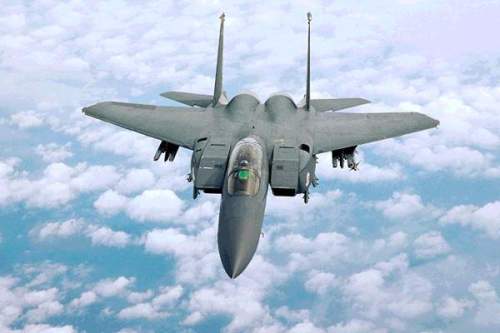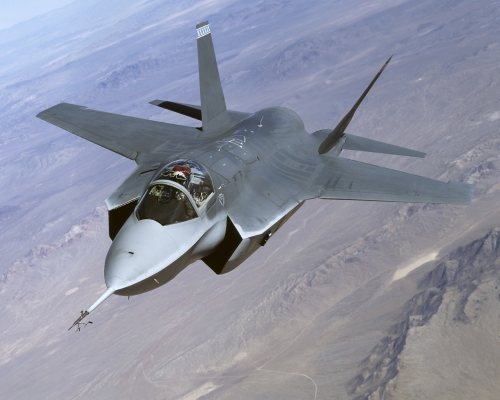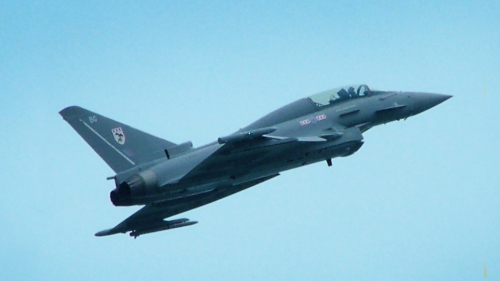South Korea is in the process of selecting a fighter jet to replace the older models in the Air Force’s arsenal.
Worth more than 8 trillion won ($7 billion), the FX-III project is the largest single defense acquisition program the country has conducted.
Under the program, 60 new fighters will be purchased to replace older models such as the F-4 and the F-5.
With Defense Acquisition Program Administration planning to close the bidding process on June 18, the project is well under way.
From June 18, a task force comprising of military and civilian experts will review the proposals until July. From then on, the DAPA will conduct tests and negotiations for two months and the winner of the contract will be announced in October.
Worth more than 8 trillion won ($7 billion), the FX-III project is the largest single defense acquisition program the country has conducted.
Under the program, 60 new fighters will be purchased to replace older models such as the F-4 and the F-5.
With Defense Acquisition Program Administration planning to close the bidding process on June 18, the project is well under way.
From June 18, a task force comprising of military and civilian experts will review the proposals until July. From then on, the DAPA will conduct tests and negotiations for two months and the winner of the contract will be announced in October.


The January bidding was entered by Lockheed Martin with its F-35 Lightning II, Boeing and its F-15 Silent Eagle and European Aeronautic Defense and Space Company N.V. with the Eurofighter Typhoon, along with Saab with its Gripen.
However, some still doubt whether the project can be conducted according to schedule.
“There were many cases in the past when such large projects did not get completed according to the original schedule,” a government official with close knowledge of defense acquisition programs said.
“And this year there is the general election and presidential election, which has made some people doubt whether the current government can push the project through.”
Despite such speculation, which has persisted since the project began in late January, the DAPA says that the process of selecting a new fighter jet will go as scheduled.

The plans were reiterated on April 3 after the DAPA held a conference with the bidding companies.
After the conference, attended by officials from Lockheed Martin, EADS and Boeing, the DAPA made known its intention to carry out a “fair and clear” bidding and said that the winner would be selected by the end of October in the “most beneficial direction possible for the country.”
In evaluating each fighter jet, the DAPA will look at 150 criteria according to four main standards. The standards are cost, ability to meet the required operation capabilities, interoperability, and economic and technological benefits.
For the government, which plans to develop fighter jets with indigenous technology, technology transfer is a key criterion.
“How many South Korean parts are used in the fighter jets is very important grading criteria. It is not just simply to sell the parts, but to learn techniques to integrate them well into the aircraft through working together. That is our goal,” DAPA Commissioner Noh Dae-lae said in an interview with The Korea Herald late last year.
With regards to Korean parts, Boeing may arguably have an advantage as a number of parts that go into its commercial and military aircraft are already produced in Korea.
However, with defense technologies being among the more closely guarded assets, it remains to be seen just how much technology transfer will occur.
Although Japan gained final assembly and checkout, or FACO, rights in its deal with Lockheed Martin, it is unclear whether Korea will be afforded the same conditions.
In addition, while industry sources say that assembling aircraft can’t be done without a level of technology transfer, technology gained through such processes may be limited.
In terms of operational capabilities of the fighters, Seoul had initially focused on radar evading functions, low radar cross-section and the internal weapons bay, viewing the stealth capability as a prerequisite. However, the government has since changed its stance, which would have ruled out the F-15 Silent Eagle and the Eurofighter from the outset, for the purpose of conducting the program as an open competition.
While each fighter has its advantages ― the F-15 has larger weapon carriage capacity while the F-35 boasts full-stealth capability ― non-operational factors also come into play.
The F-15 Silent Eagle has the advantage that earlier versions of the aircraft are already operated by the Air Force, reducing training and maintenance costs. However, the F-15 Silent Eagle is based on a platform developed some time ago, which according to industry sources may limit its potential for upgrades.
The F-35 has full stealth capabilities, an entirely new feature for the Korean Air Force, but pilots would need to undergo training and extra costs could arise from the need for new facilities for maintenance related matters.
Another non-operational factor may be Japan’s selection of the F-35, which is said to be favored by many in the Air Force.
Due to the F-35’s full stealth capabilities, Lockheed Martin’s offering is said to be favored by the Air Force as fighter jets with stealth capabilities have proven to have a significant advantage over those without to avoid detection by radar.
In a training exercise in 2006, the stealth F-22 reportedly beat non-stealth aircraft including the F-15, 144 to zero.
In addition to Japan, Israel has also chosen the F-35, adding to its profile.
While those in the industry are not publically speculating on how Japan and Israel’s decisions will influence Seoul, the developments are unlikely to be ignored entirely.
“Israel is in a tough neighborhood and Japan faces the same security concerns as Korea,” senior Lockheed Martin officials said, adding that Japan and Israel operating the aircraft will provide an “independent assessment” of the F-35’s capabilities.
By Choi He-suk (cheesuk@heraldcorp.com)
-
Articles by Korea Herald










![[Today’s K-pop] BTS pop-up event to come to Seoul](http://res.heraldm.com/phpwas/restmb_idxmake.php?idx=644&simg=/content/image/2024/04/17/20240417050734_0.jpg&u=)
![[Graphic News] More Koreans say they plan long-distance trips this year](http://res.heraldm.com/phpwas/restmb_idxmake.php?idx=644&simg=/content/image/2024/04/17/20240417050828_0.gif&u=)
![[KH Explains] Hyundai's full hybrid edge to pay off amid slow transition to pure EVs](http://res.heraldm.com/phpwas/restmb_idxmake.php?idx=644&simg=/content/image/2024/04/18/20240418050645_0.jpg&u=20240419100350)





![[KH Explains] Hyundai's full hybrid edge to pay off amid slow transition to pure EVs](http://res.heraldm.com/phpwas/restmb_idxmake.php?idx=652&simg=/content/image/2024/04/18/20240418050645_0.jpg&u=20240419100350)

